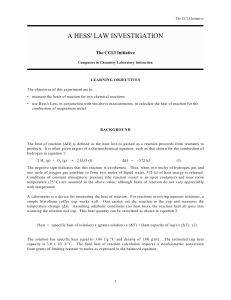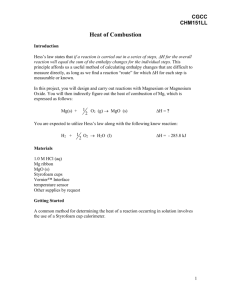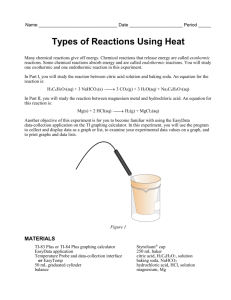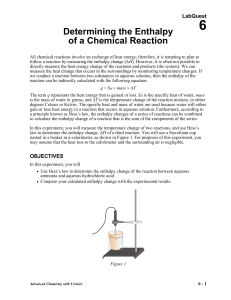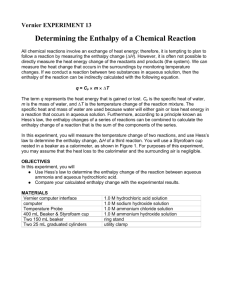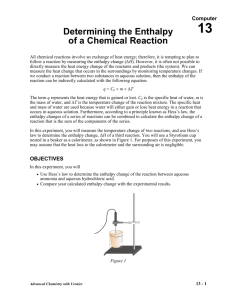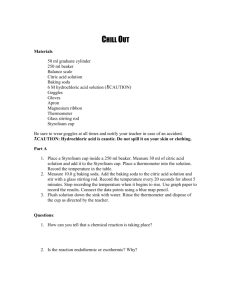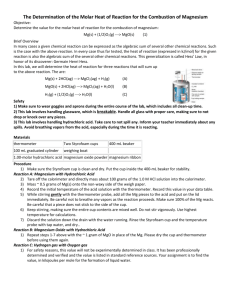THERMOCHEMISTRY Mini-Lab Connect a Temperature Probe to
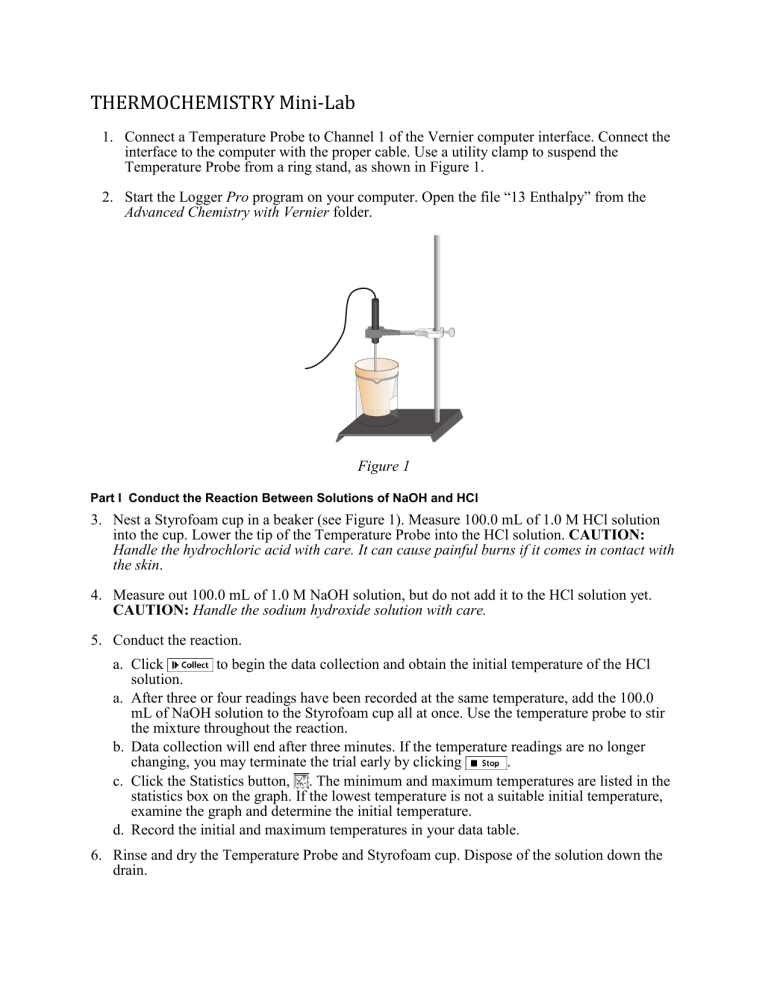
THERMOCHEMISTRY Mini-Lab
1.
Connect a Temperature Probe to Channel 1 of the Vernier computer interface. Connect the interface to the computer with the proper cable. Use a utility clamp to suspend the
Temperature Probe from a ring stand, as shown in Figure 1.
2.
Start the Logger Pro program on your computer. Open the file “13 Enthalpy” from the
Advanced Chemistry with Vernier folder.
Figure 1
Part I Conduct the Reaction Between Solutions of NaOH and HCl
3. Nest a Styrofoam cup in a beaker (see Figure 1). Measure 100.0 mL of 1.0 M HCl solution into the cup. Lower the tip of the Temperature Probe into the HCl solution. CAUTION:
Handle the hydrochloric acid with care. It can cause painful burns if it comes in contact with the skin .
4. Measure out 100.0 mL of 1.0 M NaOH solution, but do not add it to the HCl solution yet.
CAUTION: Handle the sodium hydroxide solution with care.
5. Conduct the reaction. a.
Click solution.
to begin the data collection and obtain the initial temperature of the HCl a.
After three or four readings have been recorded at the same temperature, add the 100.0 mL of NaOH solution to the Styrofoam cup all at once. Use the temperature probe to stir the mixture throughout the reaction. b.
Data collection will end after three minutes. If the temperature readings are no longer changing, you may terminate the trial early by clicking . c.
Click the Statistics button, . The minimum and maximum temperatures are listed in the statistics box on the graph. If the lowest temperature is not a suitable initial temperature, examine the graph and determine the initial temperature. d.
Record the initial and maximum temperatures in your data table.
6. Rinse and dry the Temperature Probe and Styrofoam cup. Dispose of the solution down the drain.
7. Repeat the experiment, this time using 50.0 mL of 1.0 M HCl and 50.0 mL of 1.0 M NaOH.
Record the initial and maximum temperatures in your data table. Rinse and dry the
Temperature Probe and Styrofoam cup. Dispose of the solutions down the drain.
Part II Conduct the Reaction between Magnesium and Hydrochloric Acid
8. Measure 100.0 ml of 1.0 M HCl into the cup. Lower the tip of the temperature probe into the HCl solution.
9. Obtain 0.05 g (approximately 3 cm) of magnesium ribbon.
10. Conduct the reaction: a.
Click solution.
to begin the data collection and obtain the initial temperature of the HCl b.
After three or four readings have been recorded at the same temperature, add the magnesium ribbon mL to the Styrofoam cup. Use the temperature probe to stir the mixture throughout the reaction. c.
Data collection will end after three minutes. If the temperature readings are no longer changing, you may terminate the trial early by clicking . d.
Click the Statistics button, . The minimum and maximum temperatures are listed in the statistics box on the graph. If the lowest temperature is not a suitable initial temperature, examine the graph and determine the initial temperature. e.
Record the initial and maximum temperatures in your data table.
11. Rinse and dry the Temperature Probe and Styrofoam cup. Dispose of the solution down the drain
12. Repeat the experiment, this time using 200.0 mL of 0.5 M HCl and 0.05 g of magnesium. Record the initial and maximum temperatures in your data table. Rinse and dry the temperature probe and Styrofoam cup. Dispose of the solutions down the drain.
